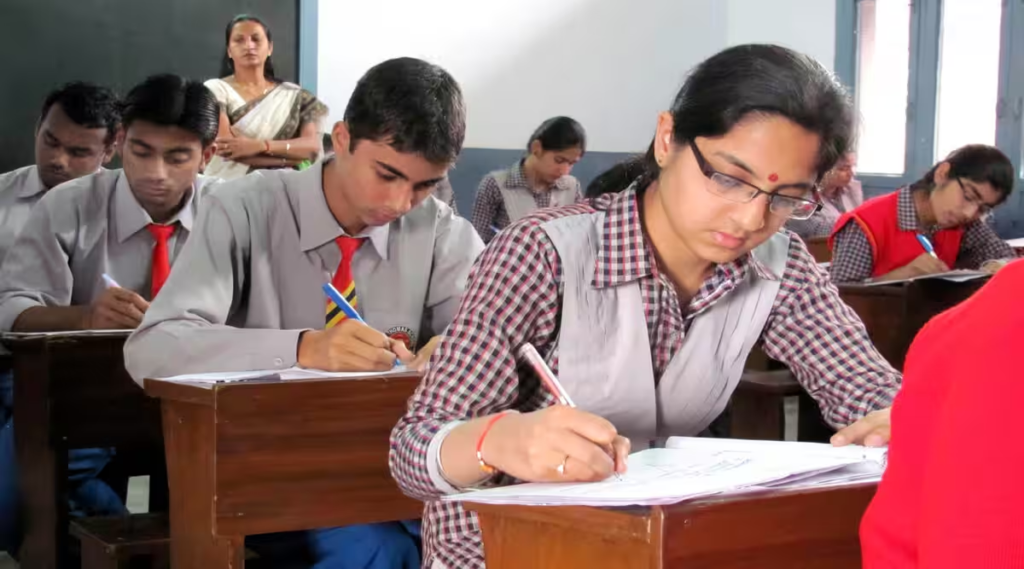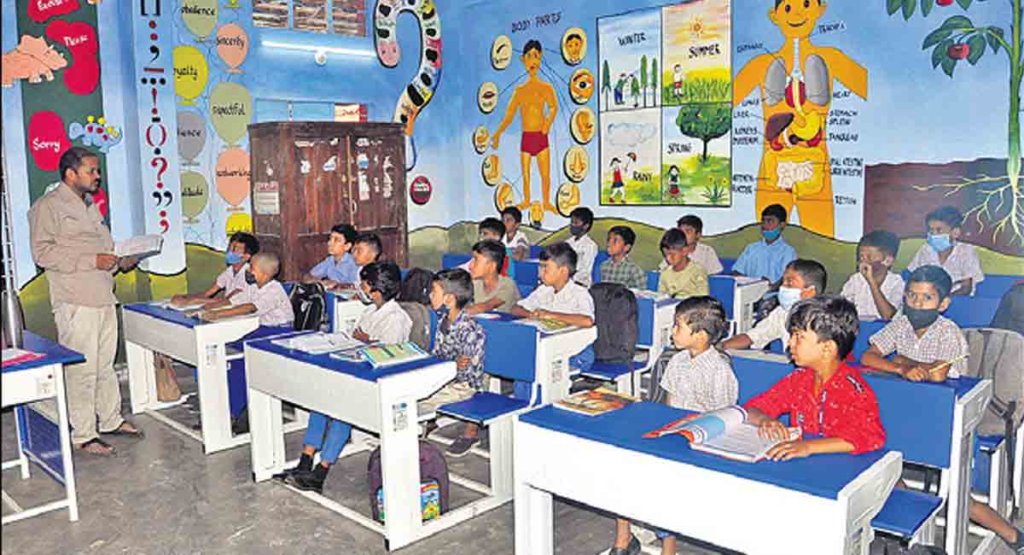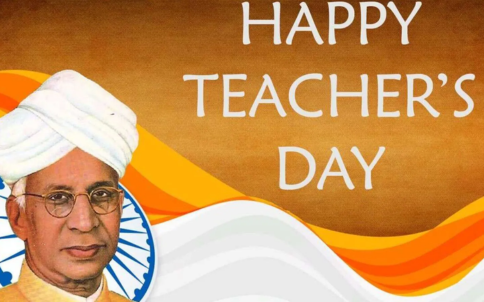Musings by Shekhar Nambiar
September 5 is Teachers Day as the nation celebrates the135thbirth anniversary of philosopher-statesman Sarvepalli Radhakrishnan, our second President and one of India’s most illustrious heads of state.
If a question were asked of today’s children, not many would know that Dr Radhakrishnan was born in the small temple town of Tiruttani in Tamil Nadu’s Tiruvallur district, near Tirupati in Andhra Pradesh.

Muruga’s abodes
Equally less known would be that Tiruttani has now become a suburb of Chennai within the Chennai Metropolitan Area. Not many would know that the town is also renowned for the Tiruttani Murugan Temple? It is an Arupadaiveedu, one of Lord Subramanya’s six abodes.
The other five sacred abodes are the magnificent Tiruchendur temple on the sea shore in the deep south, the rock-cut Thiruparankundram near Madurai, Palani atop a hill spur on the Western Ghats with Pollachi to the north and Kodaikanal on the southwest, Swamimalai, and Pazhamudircholai.
Also read: Rover’s moonwalk sets India on course for space forays
To some, Tiruttani may be a nondescript town, but I was quite excited when I visited the town a few years ago for the wedding of a colleague. Precisely for the reasons cited and also as I’d heard my mother talk of Tiruttani, which she had been to as a young child. I have also had the good fortune of visitingThiruparankundram, Tiruchendur and the shrine of shrines Palani.

Teachers Day
Teachers Day offers us the opportunity to look at the school system – primary, middle and secondary – not so much higher education, purely as an observer. After her Bachelor’s degree and Teachers’ Training (then BT), my mother started her early life as a teacher and so my affinity with teachers. Despite her short career teaching senior classes at Cherukunnu High Schoolin present-day Kannur (then North Malabar), students continued to seek her counsel from afar, some after several decades. Several remember her fondly to this day and recall her teaching abilities.
Teachers lay the foundations of moral values and teachings in young children that last with them forever.They leave lasting imprints when we are at the most impressionable age. To my mind, ages 5-10 are crucial for much of our early learnings. Mahabharata and Ramayana my mother read to us as kids remain etched in my memory to this day.
Most countries of the world honour their teachers. And India is no exception. September 5 isThanksgiving Day, our way of giving back in whatever manner, even if compliments by words, to teachers who spend their lifetime to developing and nurturing us — children, from nursery, kindergarten to senior school.

Keeping drugs away
Visits to schools, mostly government and corporation run, in different parts of India have me change my opinion about the future of public education in India.Things are looking up in so far as elementary and primary education are concerned. Of the several schools I have seen these past few years, it must be said they are mostly in reasonable shape, and of course, some states are better than others.
Gone are the days of dilapidated and run down infrastructures, or schools without toilets, electricity or water. Enough attention is also being paid to awareness about the ill-effects of drug use. WhatsApp and other such applications to track student attendance and keeping both school and parents informed of the whereabouts of their wards are all making a positive impact. Police and social welfare departments are proactively involved in patrolling school perimeters and removing drug peddlers and cigarette and beedi kiosks from near educational institutions to help keep drugs safely away from children.
Also read: A firm hand to deal with errant China
Genesis of problem
Time was when state-run schools were notoriously inefficient, ineffective and demotivating for teachers, staff and children. It was not always so.
Before and during the immediate post-independence period, these schools were the go-to places for education for ordinary folk who couldn’t afford the elite Doon schools and Etons of the world.
The rot set in over time. Demotivated teachers and decaying infrastructure, ill-equipped labs, and a corrupt and inefficient government machinery, including in the midday meal schemes for children from less privileged backgrounds, all contributed to the downward spiral of public education.
Funding was probably not the only problem. The system had become inefficient and the rot became all too evident. The malaise spread with no effort made to stem the rot.
Take teachers, the backbone of the education system. They were not motivated enough and just took their calling as mere jobs, looking forward to their next pay and increments.
In several Indian states, these were the very schools that nurtured generations of children, who in turn came to occupy key positions in a range of professions: doctors, engineers, scientists, administrators, and civil servants.

The proliferation of private English-medium schools, and of these many owned by fly-by-night operators, and the public’s mad scramble for admissions in them simply because of the medium of instruction, led to a slow decline and decay in the public education system. Instead of a healthy competition, the latter simply collapsed under the onslaught of the false promises and claims of the private players -often realtors, land sharks and politicians in disguise.
Also read: Indian cities: The challenge and opportunity
Not all private schools needed to be looked at with suspicion though. Several of them, especially those established by trusts – some exclusively for girl children –have turned out to be good institutions, serving as excellent examples of how to run a school.

Government initiatives
It has to be said that the governments have done their bit for universalisation and elementary education.
Children up to age 14 have become eligible for free and compulsory education. By a Constitutional amendment, education has been made a fundamental right.
The Sarva Shiksha Abhiyan, a program initiated by the Vajpayee-led NDA government in 2001, aimed to implement and fulfil the Constitutional provision of making Education a fundamental right.
Also read: A mission revisited
Despite having implemented over two decades ago, the program has struggled to achieve significant results. Poverty, stigma and ignorance of parents, lack of funds and coordination among the departments and a general apathy towards elementary education are cited as among the challenges the program faced.

On the right track
I realise now that, contrary to the generally perceived notions of ill-tempered teachers wielding the cane and of dilapidated buildings and teetering infrastructure, there has been a quantum leap forward in India’s public education school system. It’s good to see the old giving way to the new. The old-fashioned idiom ‘Spare the rod and spoil the child’ is no longer in vogue.
There’s every reason to rejoice at the change and believe that the rot in the system is being set right, and at a fast pace. We certainly can say ‘All is Well’.
If things are the way it looks from the outside, more so in certain states than others, it can be said that our children are in safe hands and we are on the right track.
The benefits of education cannot be more emphasised.
From being literate to taking informed decisions and making choices, children will have doors and opportunities opening for them – offering a life full of promise and freedom from poverty.
Also read: China is watching
Social skills
More than anything else, education should and must help children develop social literacy, character building, inter-personal relations, communication, and emotional and lifeskills that’d make them adapt and entrench themselves well in society, and be better prepared for the future.
A child’s education – especially of girls – will enlighten parents to rid themselves and their families of superstitions, habits, and also lead them to a healthy living.

In older children, it helps in avoiding them fall victim to a life of crime and drugs. A child going to school will be healthier and more active. For instance, better aware children also realise the need for getting their eyes checked if they find difficultyto read books or see the board clearly. A pair of healthy eyes, after all, is an essential pre-requisite to a good education and learning.
In short, education contributes to all-round, wholesome development, physical and mental, and clear thinking that enable them to be future ready.
Future looks good
If the battle of Waterloo was won on the playing fields of Eton, a quote famously ascribed to the Duke of Wellington, India’s future wars against poverty, hunger and gender inequalities will be won in our elementary schools.
The future lies in the public education system. It will play an even greater role in fulfilling rising India’s aspirations.
Also read: When it rains, it pours




